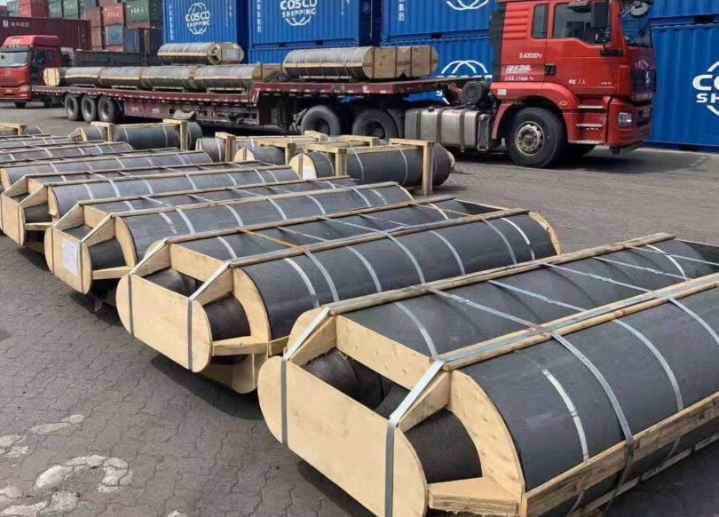
Graphite Electrode is an essential component of the foundry industry, helping to ensure high-quality castings. The electrodes can withstand high temperatures without losing structural integrity, which reduces maintenance costs and downtime, and allows for a more efficient production process. They also keep the arc steady, which helps to improve melt consistency and produce better castings. The demand for Graphite Electrode will continue to increase as the manufacturing sector in India continues to grow. This will support the growth of the market.
Graphite electrodes can be used to melt and heat metal during the foundry process. The arc produced between the electrodes & raw materials can generate intense heat of up to 3,000 degrees Celsius. This heat allows the iron to be melted and smelted, resulting liquid steel.
The melted metal is poured into the mould to create the final product. Graphite electrodes are an integral part of this process, because they generate the necessary heat to melt the metal and maintain a stable arc. The electrodes are also able to withstand high temperatures, which increases their durability and lifespan. Graphite electrodes are also well-known for their ability resist corrosion and offer excellent electrical conductivity.
Sustainability is another factor driving the growth in Graphite Electrode use in foundries. Electric arc smelting furnaces, which are more efficient and produce fewer carbon emissions than conventional smelting methods, are an example. Graphite electrodes are essential to EAF operations and their use is expected to continue increasing as more companies adopt sustainability practices.

Graphite Electrode producers in India are focusing their efforts on innovation to create better products for the foundry industry. They are using advanced technologies and implementing new methodologies to create high-quality graphite electrodes that can withstand extreme temperatures without damage. To expand their product range, they also incorporate new modifications. These modifications can include etching, coating, and dispersing additives into the conductive matrix of the electrodes.
These modified electrodes can be used for a variety of applications, including the detection of pollutants in water and smoker urine. A PGE with fluorine added can be used for detecting Cr(VI), which is present in tapwater and smoker urine. These electrodes are used to analyze environmental samples and also in the manufacture of electronic components.
The manufacture of Graphite Electrode requires a complex series of processes, including baking, impregnatin, graphitization, and mechanical processing. The electrodes' starting materials are petroleum pitch, needle coke and other materials that are subjected to high temperatures. The electrodes will then be used to melt steel, non-ferrous metals like aluminum, and other non-ferrous materials in electric arc ovens. During this process, the electrodes melt the raw materials and maintain a steady arc to avoid the formation of slag. The electrodes provide a controlled energy flow to the melting material. This helps to achieve a faster rate of production and improves the quality of the end product.

Write a Message